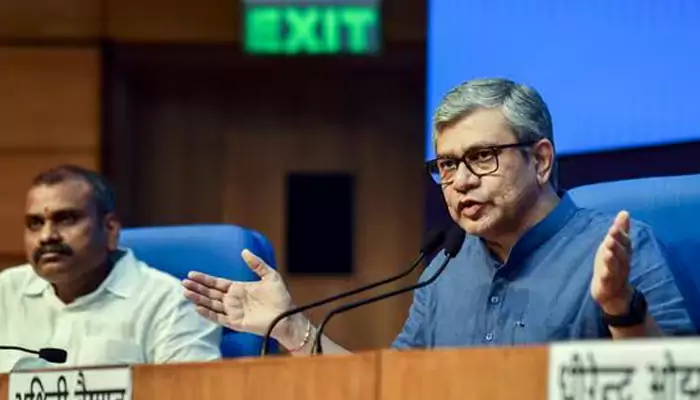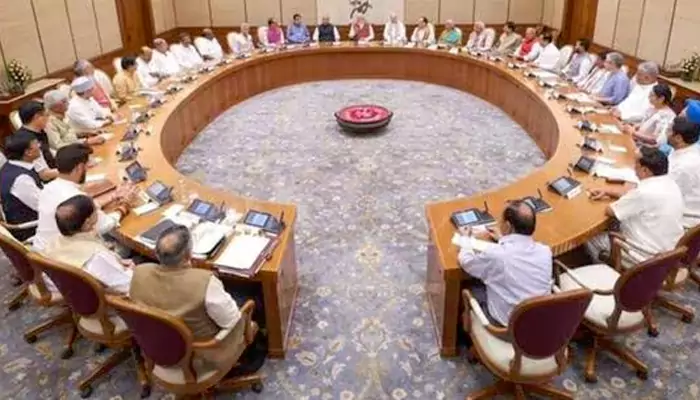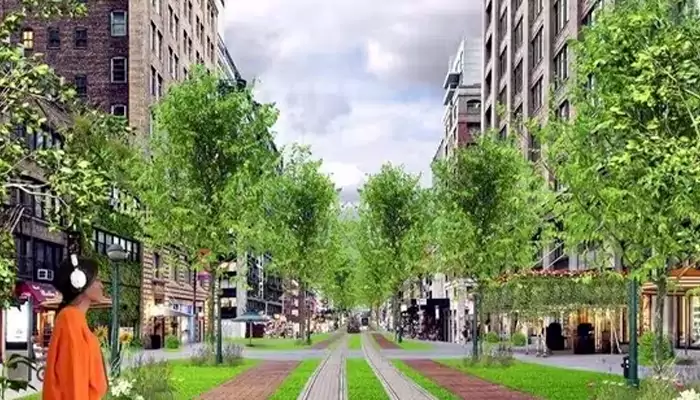12 Industrial Smart Cities To Be Built In India: Exploring The Concept Of "Walk-To-Work" Cities That Could Shape Future
- Sayan Paul
- 1 year ago
- 4 minutes read

These projects are expected to attract Over ₹1.52 lakh crore investments, creating 1 million direct jobs and up to 3 million indirect jobs in India within the next few years.
"... set to transform the industrial landscape of the country creating a robust network of industrial nodes." - The Cabinet Committee on Economic Affairs
While presenting the Union budget for 2024-25, Finance Minister Nirmala Sitharaman had announced 12 industrial cities under the National Industrial Corridor Development Programme (NICDP). And now, the Cabinet Committee on Economic Affairs (chaired by Prime Minister Narendra Modi) approved its development across six major industrial corridors in 10 states, with an estimated investment of Rs 28,602 crores. These will be in strategic locations such as Khurpia in Uttarakhand, Rajpura-Patiala in Punjab, Dighi in Maharashtra, Palakkad in Kerala, Agra and Prayagraj in Uttar Pradesh, Gaya in Bihar, Zaheerabad in Telangana, Orvakal and Kopparthy in Andhra Pradesh, and Jodhpur-Pali in Rajasthan.

Ashwini Vaishnaw during a cabinet briefing at the National Media Centre, in Delhi
According to a statement released by the government, these projects will transform India's industrial landscape, creating a "robust network of industrial nodes and cities that will significantly boost economic growth and global competitiveness". Union Commerce and Industry Minister Piyush Goyal mentioned that eight such cities are already under different stages of implementation, taking the total number to 20. Moreover, these projects are part of India's vision of 'Viksit Bharat', and will align with PM GatiShakti National Master Plan.

Notably, these cities will be developed on the 'plug-n-play', and especially the 'walk-to-work' concepts. Particularly, the latter has gained enormous prominence in recent years and has the potential to redefine the future of the urban landscape in the coming years. In this article, let's understand the concept in detail.
The Concept of Walk-To-Work Cities
As its name suggests, a 'walk-to-work' city is an urban area where you can literally walk to your workplace, and that too within 15 minutes. The concept first came during the early 20th century and started gaining attention in the 60s and 70s.

In a walk-to-work city, everything from housing to healthcare facilities to markets to commercial premises to entertainment zones to educational institutions and more are closely integrated.
The Benefits
First, let's talk about the economic benefits that come with walk-to-work cities. These cities attract a lot more businesses thanks to increased and immediate customer engagement. Especially, small businesses in local areas get huge momentum, leading to a jump in property values. On the other hand, as you don't need to rely on cars to reach your workplace, it saves the time and money that you spend on transportation.

Besides, thanks to fewer cars on the road, there are reduced carbon emissions, improving the quality of air. Consequently (and also because of regular walking), the residents tend to have better health in the long run.
The Examples
As already mentioned, several cities across the world have embraced the walk-to-work culture in recent years. According to some reports, cities like New York, Los Angeles, Boston, Copenhagen, Paris, London, Tokyo, Melbourne, Vancouver, and Amsterdam among others come atop the list.
People laud Tokyo for its public transport network but in reality it is one of the most walkable cities in the world. Look at these guide books offering hundreds of different walking courses through the city, there's even books for architecture lovers, young mothers, old people.. pic.twitter.com/I8iU3igCVr
— Wrath Of Gnon (@wrathofgnon) October 15, 2019
Credit: Wrath OfGnon
And while the concept is still yet to be fructified properly in India, cities like Pune, Mumbai, Hyderabad, and Bangalore have successfully implemented it to a certain extent.
How It Could Shape India's Future
The Indian government believes that the development of these 12 smart cities - focusing on the concept of walk-to-work - will bolster economic growth in the country significantly within the next few years.
By enhancing India's manufacturing capacities, these projects aim to facilitate investments from both large anchor industries and Micro, Small, and Medium Enterprises (MSMEs). They could help the country achieve USD two trillion in exports by 2030.
➡️ The new industrial cities will be developed as greenfield smart cities of global standards, built "ahead of demand" on the 'plug-n-play' and 'walk-to-work' concepts
— PIB India (@PIB_India) August 28, 2024
➡️ Aligned with the PM GatiShakti National Master Plan, the projects will feature multi-modal connectivity… pic.twitter.com/j1s8OGSKdS
Credit: PIB India
Also, the walk-to-work concept ensures the cities will be equipped with advanced and multi-modal connectivity infrastructure with a focus on sustainability. Overall, it would generate massive employment. "With a strategic focus on integrated development, sustainable infrastructure, and seamless connectivity, these projects are set to redefine India's industrial landscape and drive the nation's economic growth for years to come," the ministry said.












